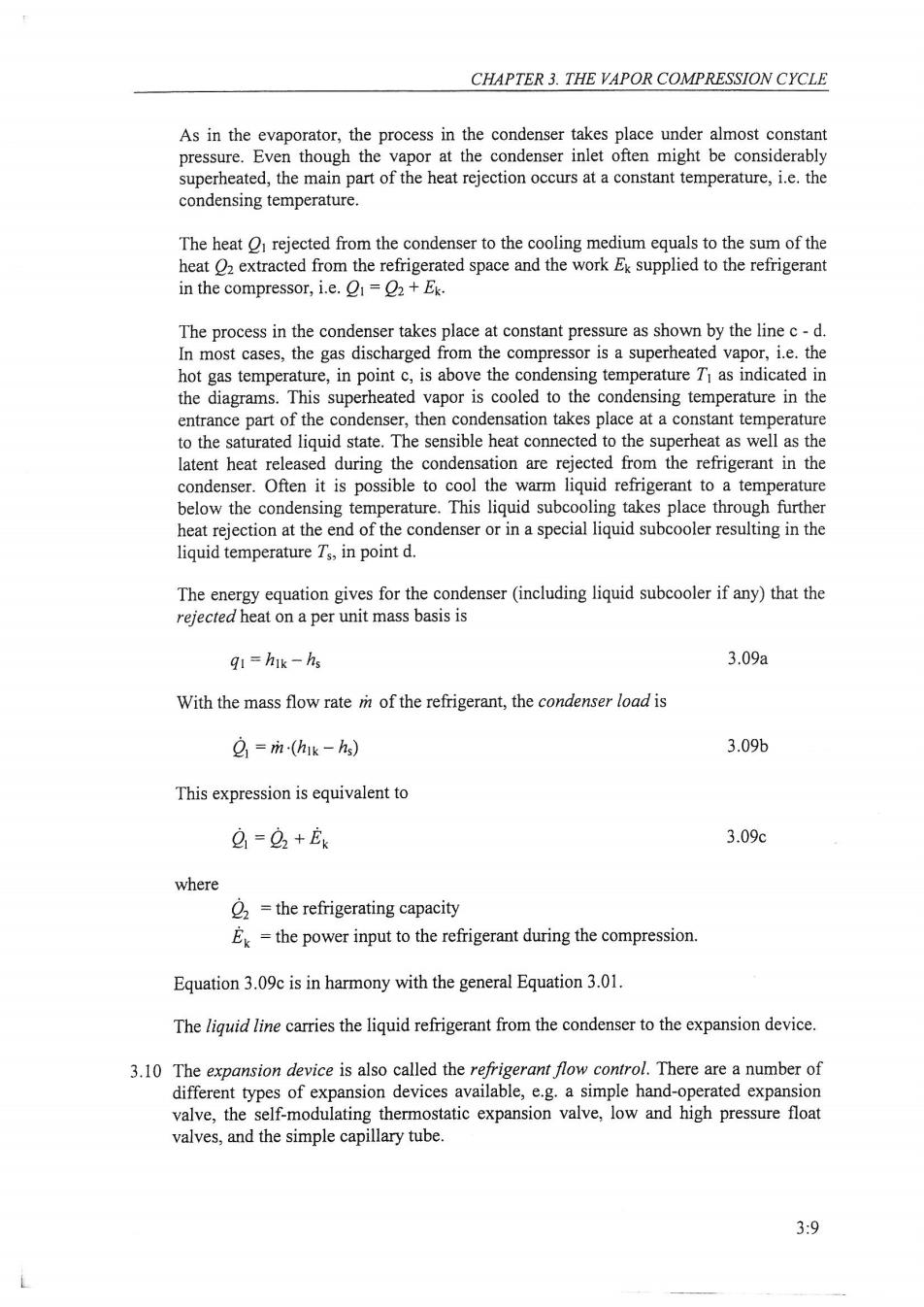正在加载图片...

CHAPTER 3.THE VAPOR COMPRESSION CYCLE As in the evaporator,the process in the condenser takes place under almost constant pressure.Even though the vapor at the condenser inlet often might be considerably superheated,the main part of the heat rejection occurs at a constant temperature,i.e.the condensing temperature. The heat O rejected from the condenser to the cooling medium equals to the sum of the heat 2 extracted from the refrigerated space and the work Ek supplied to the refrigerant in the compressor,i.e.1=2+Ek. The process in the condenser takes place at constant pressure as shown by the line c-d. In most cases,the gas discharged from the compressor is a superheated vapor,i.e.the hot gas temperature,in point c,is above the condensing temperature Ti as indicated in the diagrams.This superheated vapor is cooled to the condensing temperature in the entrance part of the condenser,then condensation takes place at a constant temperature to the saturated liquid state.The sensible heat connected to the superheat as well as the latent heat released during the condensation are rejected from the refrigerant in the condenser.Often it is possible to cool the warm liquid refrigerant to a temperature below the condensing temperature.This liquid subcooling takes place through further heat rejection at the end of the condenser or in a special liquid subcooler resulting in the liquid temperature Ts,in point d. The energy equation gives for the condenser(including liquid subcooler if any)that the rejected heat on a per unit mass basis is gi=hik-hs 3.09a With the mass flow rate m of the refrigerant,the condenser load is e=m(hik-hs) 3.09b This expression is equivalent to ②=92+Ek 3.09c where =the refrigerating capacity Er=the power input to the refrigerant during the compression. Equation 3.09c is in harmony with the general Equation 3.01. The liguid line carries the liquid refrigerant from the condenser to the expansion device. 3.10 The expansion device is also called the refrigerant flow control.There are a number of different types of expansion devices available,e.g.a simple hand-operated expansion valve,the self-modulating thermostatic expansion valve,low and high pressure float valves,and the simple capillary tube. 3:9